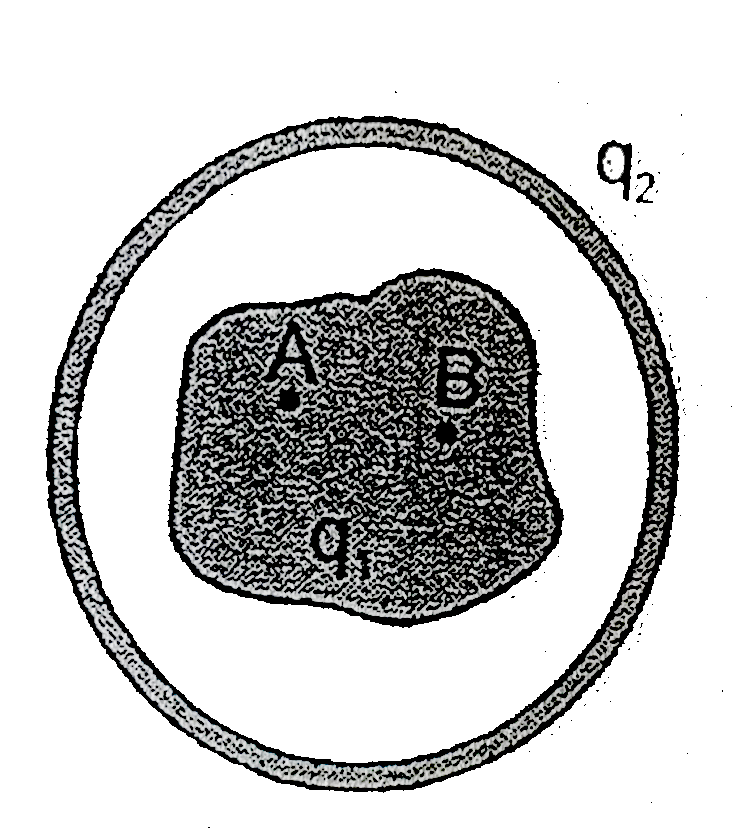An irregular shaped non conductor has some charge distribution. The potential difference between the two points A and B in it is V. If it is now enveloped in an spherical non conducting shell having uniform charge distribution in it, the new potential difference between the points (neglect any induction due to presence of charge)

Is greater than V
ls less than V
ls equal to V
Depends on the relative position of inner nonconductor vis-a-vis outer nonconducting shell
The correct Answer is:C
Step by step video & image solution for An irregular shaped non conductor has some charge distribution. The potential difference between the two points A and B in it is V. If it is now enveloped in an spherical non conducting shell having uniform charge distribution in it, the new potential difference between the points (neglect any induction due to presence of charge) by Physics experts to help you in doubts & scoring excellent marks in Class 12 exams.
Topper's Solved these Questions
- BOOK - PHYSICS GALAXY - ASHISH ARORACHAPTER - ELECTROSTATICSEXERCISE - Numerical MCQs Single options Correct64videos
ELECTROSTATICS
- BOOK - PHYSICS GALAXY - ASHISH ARORACHAPTER - ELECTROSTATICSEXERCISE - Advance MCQs40videos
ELECTROSTATICS
- BOOK - PHYSICS GALAXY - ASHISH ARORACHAPTER - ELECTROSTATICSEXERCISE - Discussion Question25videos
ELECTROSTATICS
- BOOK - PHYSICS GALAXY - ASHISH ARORACHAPTER - ELECTROMAGNETIC INDUCTION AND ALTERNATING CURRENTEXERCISE - Advance MCQs33videos
ELECTROMAGNETIC INDUCTION AND ALTERNATING CURRENT
- BOOK - PHYSICS GALAXY - ASHISH ARORACHAPTER - GEOMETRICAL OPTICSEXERCISE - Unsolved Numerical Problems107videos
GEOMETRICAL OPTICS
Similar Questions
Knowledge Check
- Question 1 - Select One
The work done in moving a charge from one point to the other is 20J. If the potential difference between the points is 10V, the charge is:
A4.0CB2.0CC0.5CD1.0C - Question 2 - Select One
The potential difference of two end points of a conductor is 2 V workdone in supplying 0.1 charge from this conductor is
A0.1 JB0.2 JC2 JD1 J - Question 3 - Select One
The potential difference of two end points of a conductor is 2 V workdone in supplying 0.1 C charge from this conductor is
A0.1JB0.2JC2 JD1 J
Can there be a potential difference between two adjacent conductors carrying the same charge ?
View SolutionThe work done in moving a charge of 3 C between two points is 6J. What is the potential difference between the two points?
View Solution5 J of work is done in moving a positive charge of 0.5C between two points. What is the potential difference between these points ?
View SolutionA metal sphere with a charge Q is surrounded by an uncharged concentric thin spherical shell. The potential difference between them is V. If the shell is now given an additional charge Q, what is the new potential difference between them?
View SolutionAn infinitely long line of linear charge density λ is shown in the figure. The potential difference VA−VB between the two points A and B is
 View Solution
View Solution

